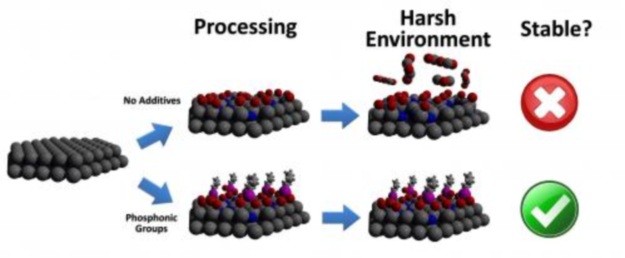A team of researchers out of North Carolina State University have developed a new manufacturing technique that makes light emitting diodes (LEDs) brighter and more resilient, without any need for an increase in energy input.

How? The group coated the semiconductor material gallium nitride with a layer of phosphorus-derived acid while simultaneously applying a self-assembling phosphonic material.
Stewart Wilkins, a Ph.D. student at NC State and lead author of a paper describing the work, describes the team’s approach:
“By coating polar GaN with a self-assembling layer of phosphonic groups, we were able to increase luminescence without increasing energy input,” says Stewart Wilkins, a Ph.D. student at NC State and lead author of a paper describing the work. “The phosphonic groups also improve stability, making the GaN less likely to degrade in solution.
“Making the GaN more stable is important,” Wilkins adds, “because that makes it more viable for use in biomedical applications, such as implantable sensors.”
Using a polar GaN, a material composed of alternating layers of gallium and nitrogen, the NC State-group etched the surface using phosphoric acid. While this was being done, they added phosphonic groups (phosphorous-containing organic materials) which, during the application process, self-assembled into a monolayer on the surface of the material.
When the etch-and-apply process was complete, the new mono layer proved to not only increase the luminescence of the gallium nitride, it also improved the material’s stability by making it less likely to react chemically with its environment.

The group’s paper, “In Situ Chemical Functionalization of Gallium Nitride with Phosphonic Acid Derivatives during Etching,” was published online in the journal Langmuir. It is available for (paid) download.
Story via: ncsu.edu
Advertisement
Learn more about Electronic Products Magazine






